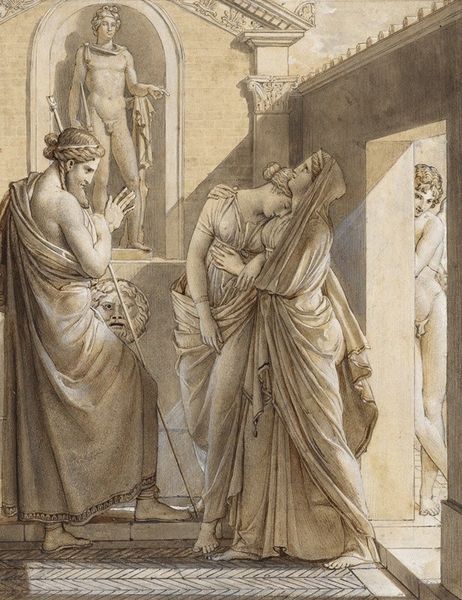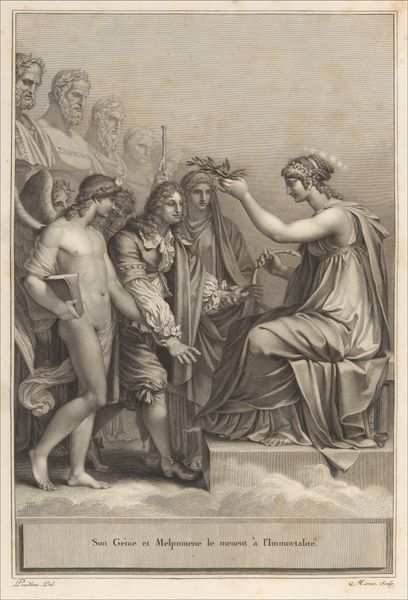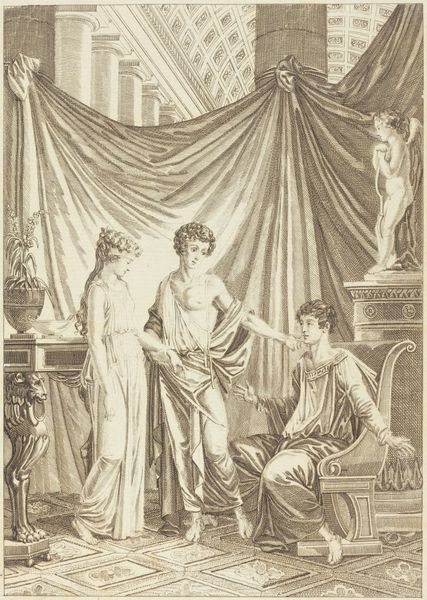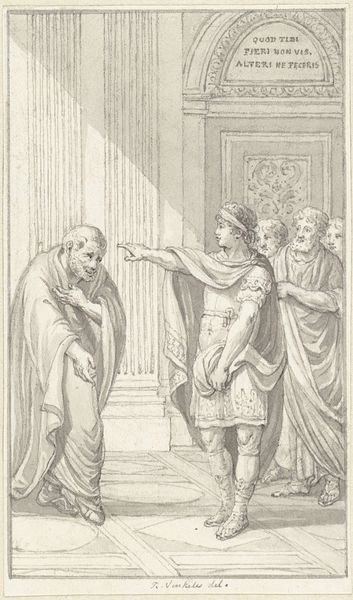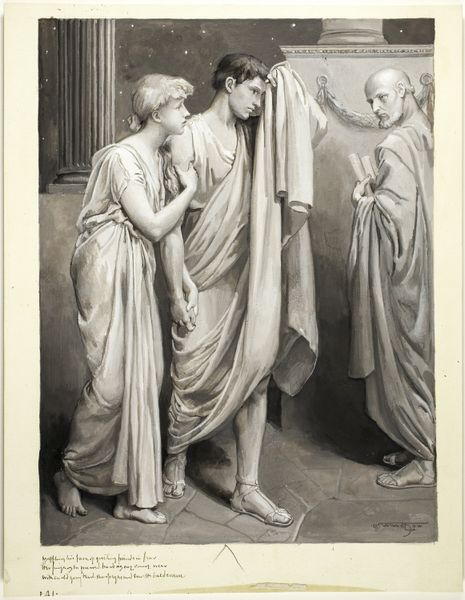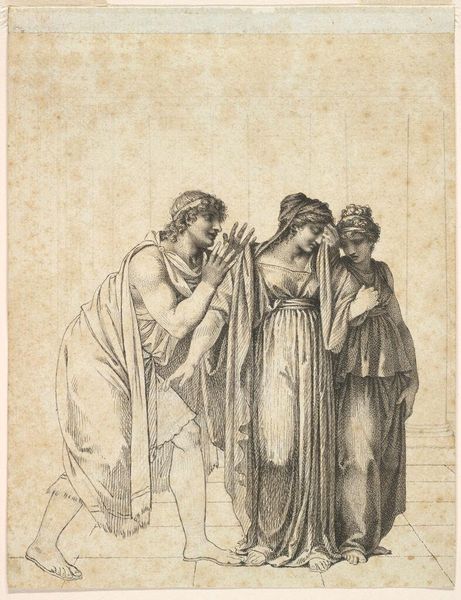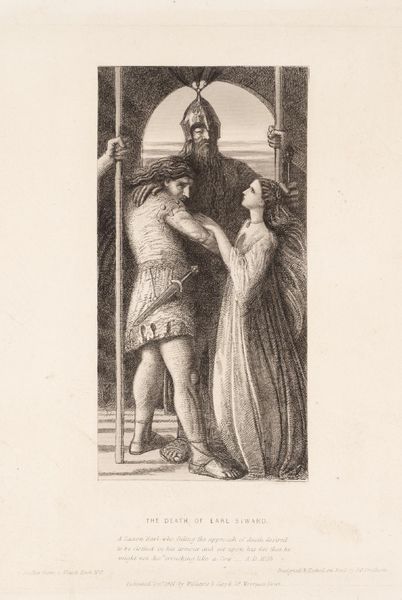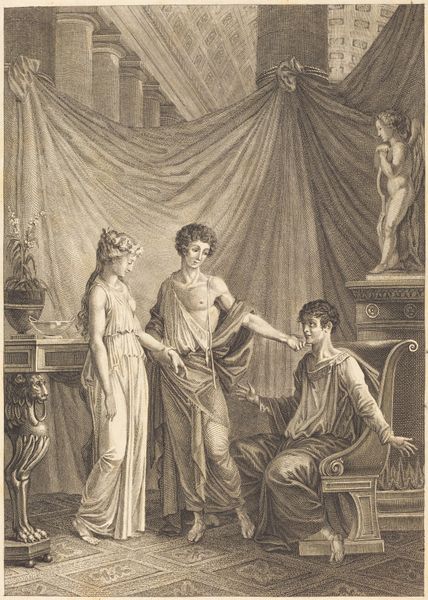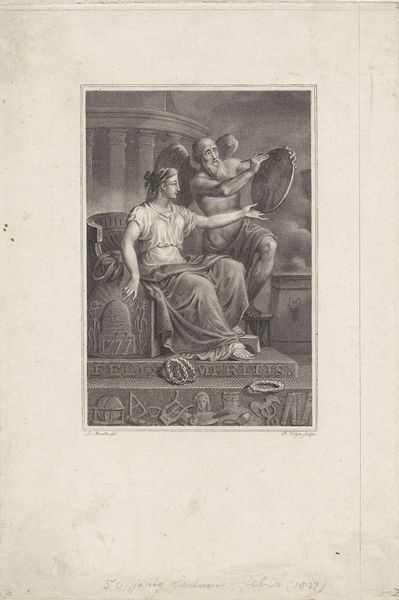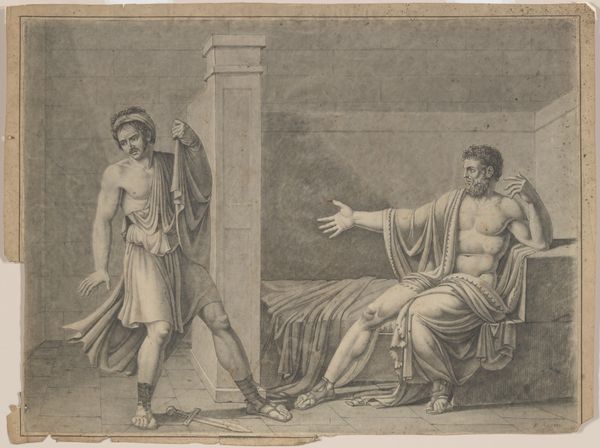
drawing, engraving
#
drawing
#
neoclacissism
#
figuration
#
line
#
history-painting
#
academic-art
#
engraving
Copyright: Public Domain: Artvee
Curator: We're looking at Anne-Louis Girodet's 1800 engraving, "Phaedra Rejecting the Embraces of Theseus." Editor: The scene is immediately striking—an atmosphere thick with refusal, grief and almost melodramatic despair. The figures are statuesque, frozen in their emotional turmoil, with a clear sense of theatrical staging. Curator: Absolutely. The Neoclassical style here is really fascinating when considering the prints dissemination through mass production. This wasn’t an individual work of art to be displayed but reproduced widely for public consumption in book illustrations and such. Editor: Right, which feeds into my initial reaction: the stark symbolism! We have the distraught Phaedra, the spurned Theseus, and Hippolytus looking stoic. Each is carrying the weight of the dramatic narrative: hidden desires, betrayal, rejection. Curator: And it's fascinating how the technique of line engraving underscores these very public yet tragic events in such crisp and precise ways. We can see it playing out as both intimate personal failure and grand political failure. Consider how engravings allowed for standardization and control. It speaks volumes about that era's mindset. Editor: And Girodet uses line to excellent effect, particularly in rendering the flowing classical garments. Those lines also work to emphasize a tension between exposure and hiding, so prominent in Phaedra’s emotions. She hides physically with the heavy shroud of her robe and symbolically from the truth about her feelings. Curator: Well, that same approach using lines extends from the immediate tragedy into broader aspects of culture like clothing manufacture itself—showing class distinction but also a set of highly coded values. Editor: I agree. Beyond the stark tragedy and interpersonal turmoil, it hints at an entire social structure. From architectural background features all the way to dress materials. A very economical approach for such depth. Curator: Indeed, in the interplay between mythological imagery and the technology of printmaking itself. Girodet effectively reveals both a dramatic scene and its societal reflection, showing cultural tensions as embodied by mythological icons for a broad audience. Editor: Yes. "Phaedra Rejecting the Embraces of Theseus" provides lasting insight into cultural codes via the compelling symbols of its players locked within a well-worn narrative—their struggle immortalized in linear patterns and shared universally via its mode of distribution.
Comments
No comments
Be the first to comment and join the conversation on the ultimate creative platform.
